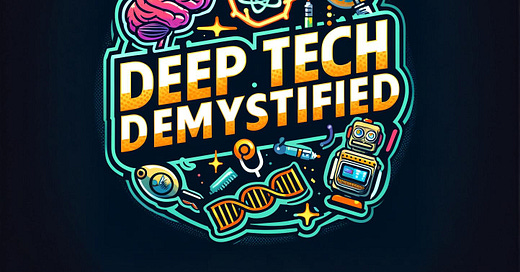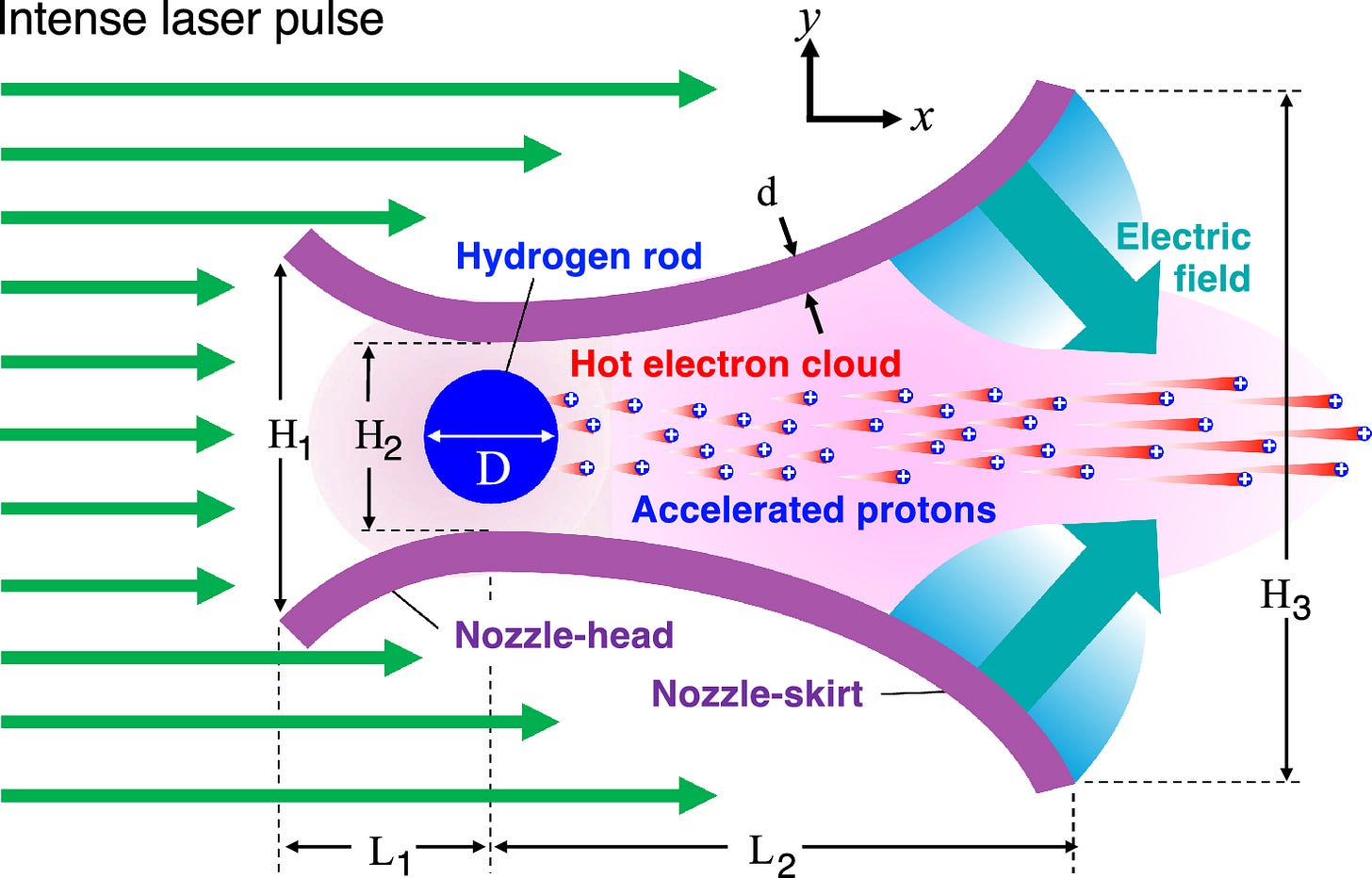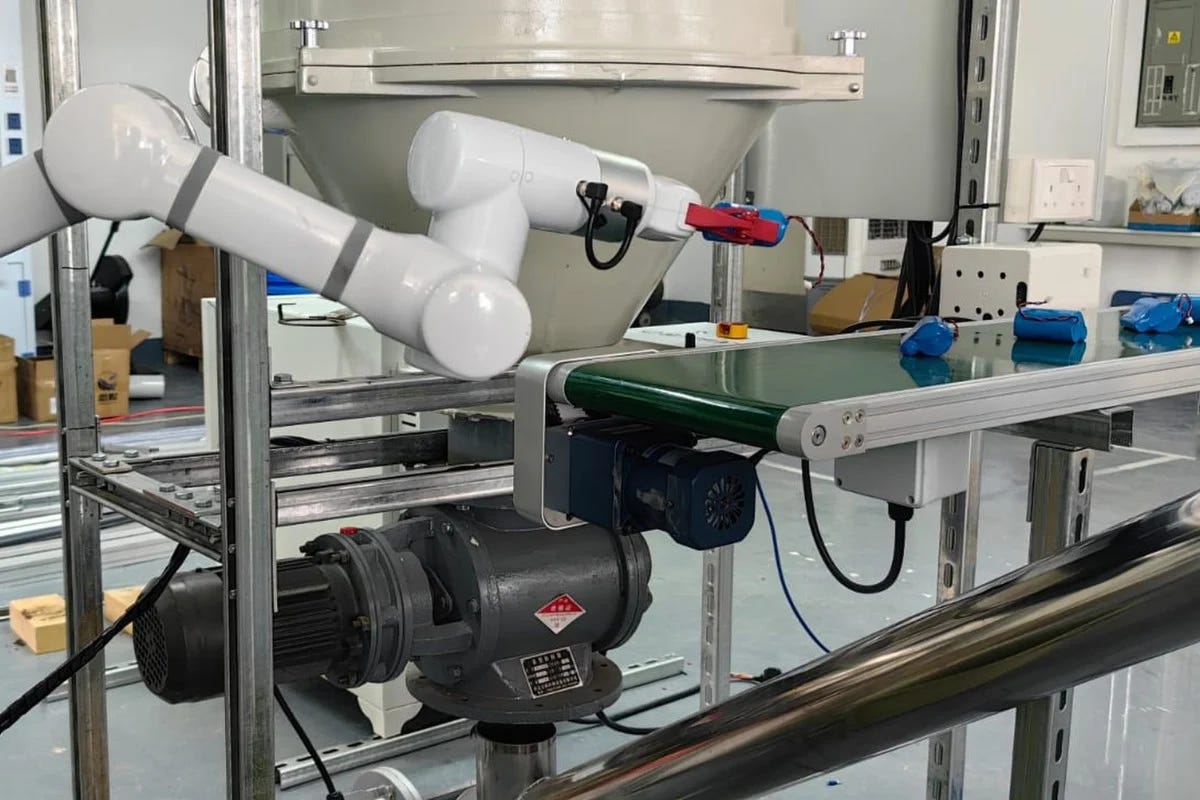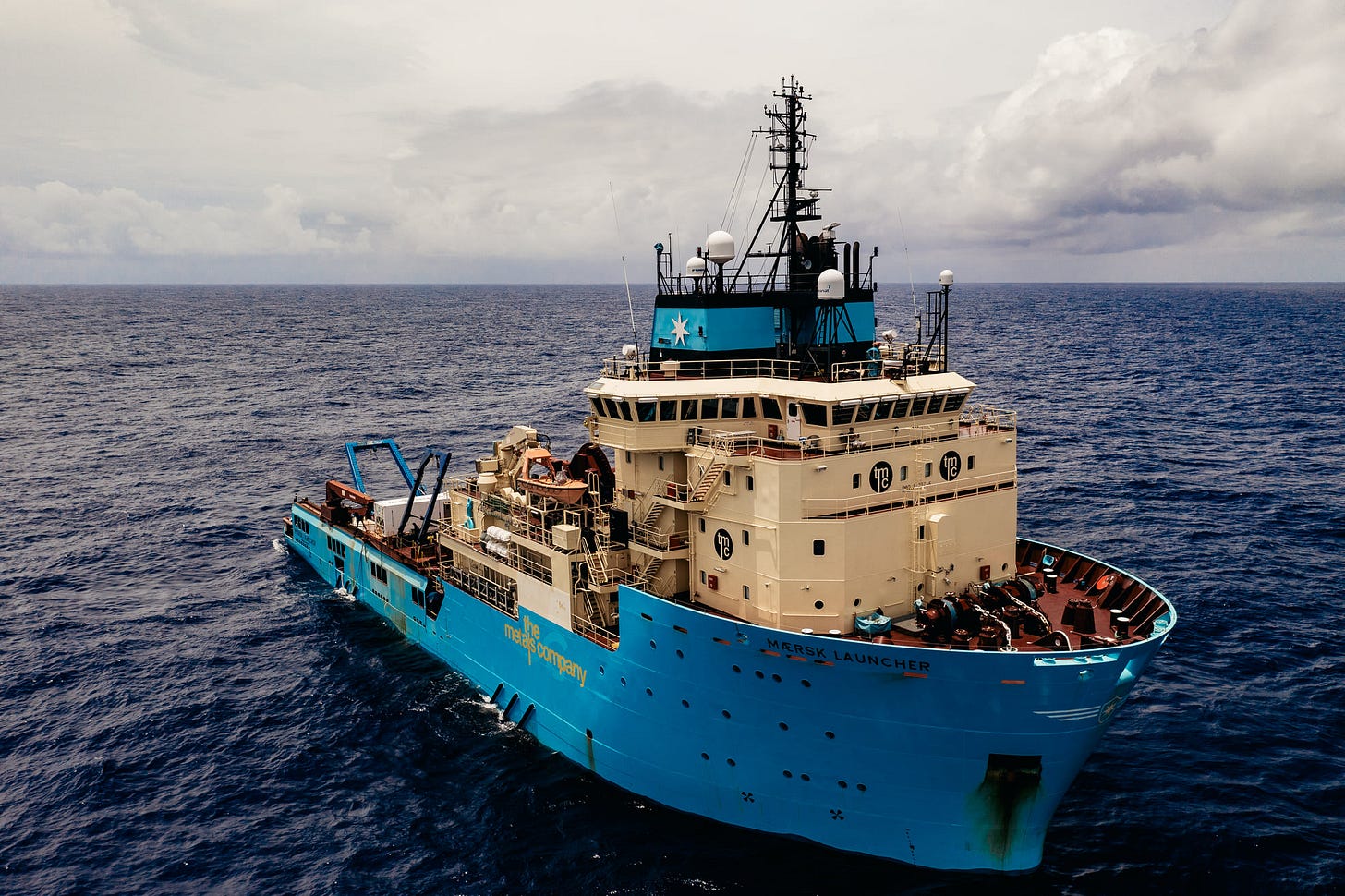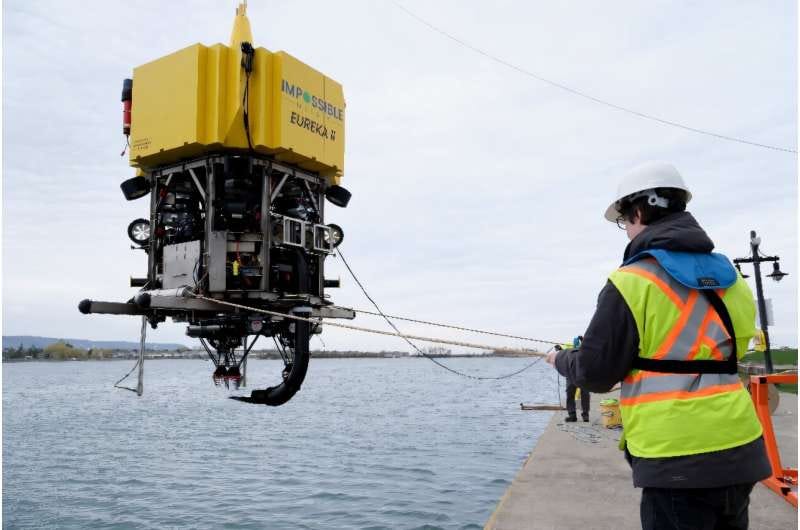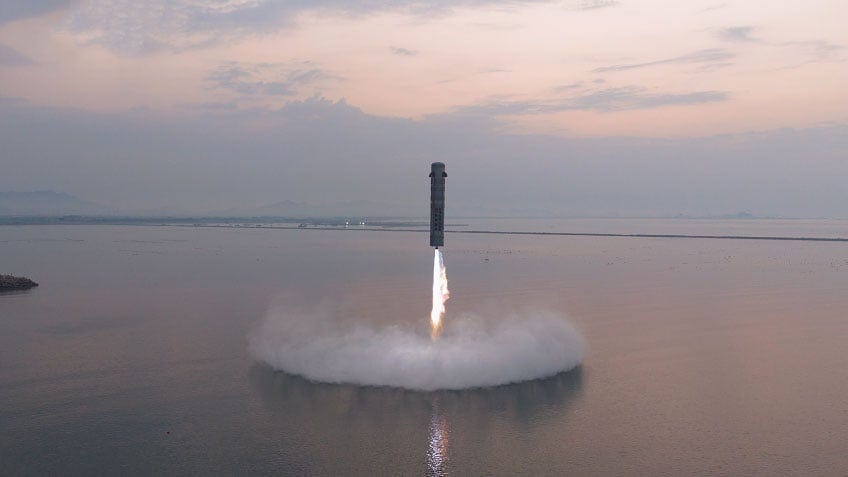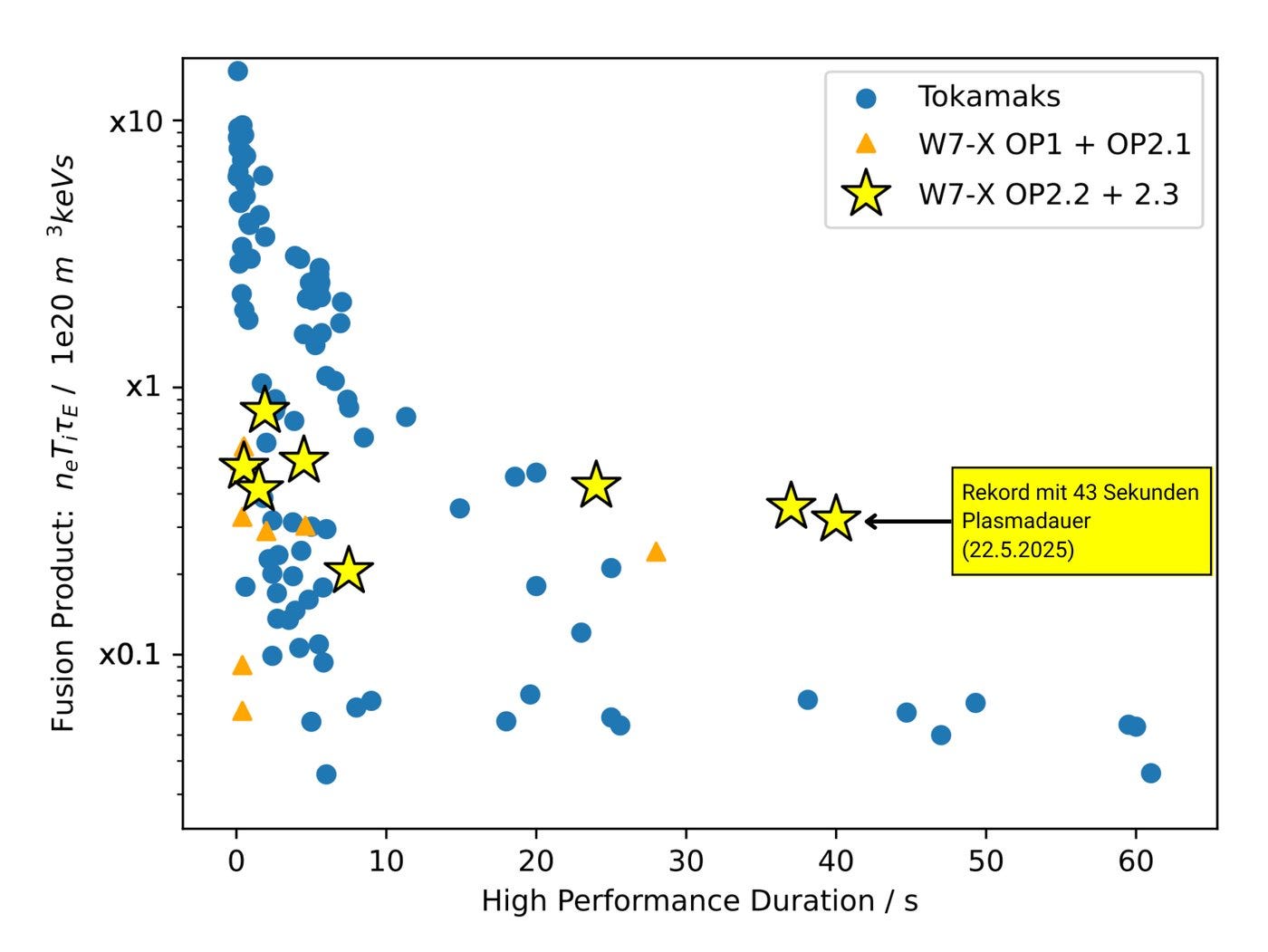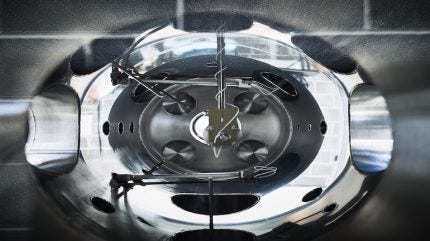Deep Tech Dispatch | #15
Bio-inspired AI | Tabletop particle accelerators | Biomining | Self-healing robots | Urban mining | Deep-sea mining | Tritium production and much more
🙋🏻♂️ A Short Preface
A bit heavy on mining and minerals this time, but man is valuable dirt a cool thing.
🧠 Continuous Thought Machines
💥 Tabletop particle blasters
🌱 Biomining of rare earths with microbes
🦾 Self-healing robot muscles
🪨 Urban mining in Hong Kong
🌊 Deep-sea mining (robots)
🚀 China’s reusable space rockets
🌟 Stellarators breaking records
☢️ Tritium production with fusion reactors
🔑 Risk Tokens: Economic Security in AI Safety
🪰 Fruit flies on addiction
Reading time: 14 minutes.
🧑🏻🔬 Science & Research News
Continuous Thought Machines
The team from Sakana AI introduced the Continuous Thought Machine (CTM), a novel architecture designed to reintegrate temporal dynamics back into the core of AI processing, striking a balance between biological realism and computational tractability. While artificial neural networks (ANNs) are loosely inspired by the brain, they largely ignore one of its most critical features: the element of time. Biological neurons use precisely timed electrical spikes, oscillations, and synchronization to process information, allowing for rapid learning and adaptation. (I’ve written about this concept in my neuromorphic computing article a while ago). Most AI models abstract this away for computational efficiency, losing much of the flexibility that makes biological learning so powerful. In the case of CMT, the neurons are equipped with their own memory to process a history of signals, which enables an internal "thinking loop" - dedicating more processing time to harder problems. Most critically, the CTM's reasoning is driven by neural synchronisation: it analyses the timing relationships between neurons, rather than just their static values, to generate outputs and solve complex sequential tasks. To demonstrate its versatility, the CTM was tested on a wide range of challenging tasks: It matched or exceeded baselines on ImageNet-1K classification, learned to solve large 2D mazes, and mastered complex algorithmic tasks like sorting real numbers and computing parity with near-perfect generalisation. You can find the paper here and the article here.
Tabletop particle blaster
Researchers from University of Osaka have made the first step to shrinking particle accelerators down to the size of a tabletop, thanks to a breakthrough in laser acceleration and microscopic manufacturing. This potential tabletop particle accelerator could be used for a wide range of applications, ranging from proton cancer therapy to laser-driven nuclear fusion reactors to simulating extreme astrophysical environments in the lab. The new concept developed by the researchers is called micronozzle acceleration (MNA). It refines a technique known as laser wakefield acceleration, where an ultra-intense laser pulse is fired into a target to create a powerful plasma wave - also called "wake" - that can trap and accelerate particles to incredible speeds in a very short distance. This focused plasma flow creates a powerful electric field inside the laser nozzle. This field enables a stepwise, stable acceleration of protons, allowing their energy to be boosted beyond 1 giga-electron-volt (GeV) - a key threshold for many applications and a significant leap over the sub-100 MeV limits of previous laser-based methods. Tabletop particle blasters, coming soon! You can find the article here and the paper here.
Biomining of rare earths with microbes
Researchers from Cornell University have discovered that a common soil microbe has a remarkable dual capability: it can efficiently extract valuable rare earth elements from industrial waste while simultaneously capturing and mineralising carbon dioxide. The real-world implications: On one hand, it offers a low-cost method for "biomining" rare earth elements - needed for everything from smartphones and electric vehicles to wind turbines - from industrial waste streams, reducing reliance on traditional mining. Simultaneously, the microbe's ability to capture CO2 and lock it away as a stable mineral offers a new pathway for carbon sequestration. The process centers on the bacterium Shewanella oneidensis. The team discovered that this microbe is exceptionally good at binding rare earth elements to its cell surface. It uses outer membrane proteins to attract and grab the valuable metal ions. The researchers then engineered the bacteria to overexpress a specific enzyme that causes phosphate minerals to form on the cell surface. This process not only traps the rare earth elements in a solid, easily recoverable mineral form but also binds CO2 from the environment directly into the mineral structure. Win-win for everyone involved. You can find the news article here and the paper here.
Self-healing robot muscles
Researchers from the University of Nebraska-Lincoln have developed a self-healing technology for soft robotics, creating an artificial muscle that can autonomously detect damage, pinpoint the location, and initiate self-repair. They integrated sensing and healing capabilities directly into the material's structure, mimicking the way biological skin heals itself. These robot muscles could lead to more resilient robotics in agriculture or manufacturing that can recover from punctures or tears without human intervention and in medicine, they could be used to create robust wearable health monitoring devices. Technologies like this could lay the foundation of the typical sci-fi futures self-healing machines vision - machines are getting more human by the day. The innovation itself is based on a novel, multi-layered artificial muscle. The key is the bottom layer, a soft "electronic skin" made from silicone embedded with microdroplets of liquid metal (a gallium-indium alloy). Normally, this material is not conductive. However, when the material suffers a significant puncture or excessive strain, the liquid metal droplets rupture and connect, forming a conductive electrical pathway precisely at the site of the damage. Registering the new circuit the damage can be detected and precisely located. Then, it sends a targeted electrical current through that new pathway. This current generates localised heat (a process called Joule heating), which warms the material just enough for the silicone elastomer to re-flow and heal the damage, sealing the hole. Once healed, the electrical connection vanishes, and the material returns to its original state. Sci-fi futures! You can find the news article here and the paper here.
🔬 Technology Frontiers
Urban mining in Hong Kong
The Hong Kong based company Achelous Pure Metals has demonstrated a new method to tackle lithium-ion battery recycling. Their system uses a combination of AI, computer vision, and robotics to identify and safely take apart individual battery cells. The system has been trained on thousands of different battery types, allowing it to recognise a specific model, determine the safest way to dismantle it, and guide robotic arms to precisely separate the anode and cathode materials. This approach directly addresses the growing mountain of electronic waste and shortage of critical minerals like lithium, cobalt, and nickel, and is a good way to create a decentralised closed-loop supply chain for batteries and electronics, reducing reliance on new mining. At the moment, their system operates at mineral recovery rates sitting at roughly 95%. I’m a big fan of this concept and hope we see some of these decentralised factories for batteries and electronics to stabilise European supply chains. You can find the article here.
Deep-sea mining in the US
The Vancouver-based startup The Metals Company has applied for a U.S. permit to conduct seabed mining in international waters. This follows an Executive Order signed by Trump in April that “establishes the U.S. as a global leader in seabed mineral exploration and development both within and beyond national jurisdiction”. The controversy here is that regulating mining of seabeds in international waters falls under the International Seabed Authority (ISA), a government body established by the UN. In the move by The Metals Company to put the US first in this mining endeavour, these international laws will get breached. You can find the article here.
Deep-sea mining robots
Speaking of Deep-sea mining, the California-based startup Impossible Metals successfully tested their autonomous deep-sea mining robot Eureka 2 in a lake to harvest critical minerals on the sea-bed with minimal environmental impact. Eureka 2 is designed to collect mineral-rich nodules - round or spherical mineral concretions - from the Pacific Ocean seabed. The robot utilises AI to identify and avoid marine life, such as octopuses' eggs, coral, or sponges, by flying over them and not impacting them. It uses robotic arms for selective collection, which the company states causes less sediment disruption compared to conventional scraping or digging methods used by competitors like The Metals Company (the company mentioned above). Impossible Metals hopes to finalise its technology, conduct ocean tests, build a fleet, and operate through partnerships within two to three years while awaiting U.S. green light.
It is worth noting here that alarm from environmental scientists and marine biologists is growing, warning of devastating consequences for the oceans from deep-sea mining, irrespective of the method. They point out that even a "lighter-touch" approach like Impossible Metals' still involves destroying the habitat of organisms living on the nodules, and the deep ocean ecosystems are especially fragile and slow to recover. Scientists are calling for a total ban or moratorium on deep-sea mining, citing risks like disturbing carbon stored in seabeds, contributing to climate change, and the lack of knowledge about deep-sea life. Let’s see where this goes. Either way, interesting developments on the minerals front! You can find the article here.
China’s Space Epoch successfully tests reusable rocket booster
The Chinese private company Space Epoch conducted a successful test of its reusable Yanxinghe-1 rocket booster, including an ocean soft-landing. The test involved a vertical launch from the Oriental Spaceport in Shandong province, where the rocket reached an altitude of 2.5 kilometers. Following the launch, the rocket booster descended and ultimately performed a powered soft landing in the ocean. This is a major breakthrough not only for Space Epoch, but also China's development of reusable liquid-fueled rockets. The first full orbital flight of the Yuanxinghe-1 is planned for later this year. China is now very close to create similar launch vehicles to SpaceX's Falcon 9. You can find the article here.
Stellarators breaking records
Scientists at the Max Planck Institute for Plasma Physics in Germany have achieved a major breakthrough in nuclear fusion using their Wendelstein 7-X (W7-X) stellarator, the origins of Germany’s Proxima Fusion. W7-X team achieved a new world record for the triple product - a measure that quantifies the success of a fusion reaction - in long plasma discharges: they sustained a new peak value of this key fusion parameter for 43 seconds. With that, W7-X surpassed the best performances of fusion devices of the tokamak type for longer plasma durations. The success is attributed to a new fuel-pellet injector that allows for continuous refueling of the plasma. This achievement is a significant validation of the potential stable and long-duration operation of stellarators and a crucial step towards commercial fusion power plants. You can find the article here.
Tritium breeder breakthrough
Shameless plug. Our portfolio company Astral Systems has announced a major advancement for commercial fusion energy, becoming the first private company to successfully produce tritium using its own operational reactor. This directly addresses one of the most significant bottlenecks holding back fusion power: the extreme scarcity of tritium, a vital isotope of hydrogen needed as fuel for most fusion reactors out there. The big problem with tritium is, that the global reserves estimated to be less than 20 kg and until now could only be produced as byproduct of nuclear fission reactions in small quantities. Astral Systems ran a 55-hour experiment using their compact reactor - yes their nuclear fusion reactor can run that long. They surrounded the core with a "breeder blanket" containing lithium. As the reactor operated, it generated high-energy neutrons that bombarded the lithium, transforming some of it into tritium. While the quantities produced are still experimental, it proves that we can indeed artificially produce tritium within fusion reactors at scale. You can find more details in the article here.
💡 Articles & Ideas
Risk Tokens: Economic Security in AI Safety
As AI models grow more powerful, so do the risks they pose, from enabling sophisticated cyber-attacks to designing novel bioweapons. In his newest thesis, Michael Dempsey proposes a novel way to manage this danger: a system called Risk Tokens that would create a market-based financial disincentive for using AI in potentially harmful ways. This could be implemented twofold: Either the AI model output, or the pathways within the models reflecting certain dangerous areas could be classified based on perceived riskiness and a risk token attached to them. Implemented this could mean that if you’re trying to design a novel dangerous bioweapon, the generated output and the attached token is so expensive, that only big research institutions can afford them. Or that you can give out budgets to certain institutions to generate such outputs in the first place. This is a cool concept towards AI safety and a really stimulating read. Have a look here!
🤔 Odd Read of the Week
Fruit flies on addiction
Genetically modifying fruit flies for cocaine addiction. Yes you’ve read that right. Researchers at the University of Utah successfully engineered flies that will voluntarily (lol) self-administer the drug. Why you ask? Well, you can use that for research of cocaine addiction and implications in humans. The feat here is that fruit flies, unlike humans, are naturally repulsed by cocaine (again, lol). With their preferences for cocaine genetically adjusted, the flies' behavior flips. When given them a choice between sugar water and sugar water laced with a low dose of cocaine, the modified flies began to show a preference for the drug-laced option within just 16 hours. With the addiction now sorted, scientists can probe the fundamental biology of choice and addiction in a way that was never before possible. While all of this sounds a bit bizarre it is a huge leap forward in understanding the mechanisms of the mind, paving the way for targeted treatments. You can find the paper here and the article here.
📚 Further Goodreads
The Case for Turning Starbase into a Special Economic Zone
People don’t grasp how momentous this is. Every single megapolis in the world is a transportation hub. New York was the trade hub between the Great Lakes and the Atlantic, Chicago between the Great Lakes and the Mississippi, London is the head of navigation of the Thames River, Paris the crossroads between the Seine and Marne rivers.
Starbase could become one of the most important cities on Earth: the first interplanetary hub.
A reinvigorated push for nuclear power in space
“There’s companies that want to do other industrial processes on the moon,” Lal noted. “And then if we go to Mars, we are going to need to generate propellant on Mars for journeys back. Especially if we use chemical systems again, we need megawatts of power to be able to do that sort of thing. And that is not coming from solar or batteries or fuel cells.”
Europe’s far-reaching Space Acts nears Launch
The Space Act comes as the European Union ramps up space sovereignty efforts amid shifting geopolitical winds, including through ReArm Europe, a more than $900 billion increase in defense spending to reduce reliance on the United States.
While details of the incoming law remain under wraps, legal experts anticipate a move away from voluntary guidance toward binding obligations in key areas such as space sustainability, safety, resilience and security.
First impressions of a humanoid social robot with natural language capabilities
Results suggest that participants desire a human-like verbal exchange, including role- and turn-taking, and are frustrated when this does not happen, mirroring previous research7. We also found that embodiment of the chatbot was associated with additional expectations of human-like behaviours by Pepper, such as the ability to “read” emotions in facial expressions and body movement, and that the robot’s physical gestures would reflect the content of its speech.
The bad science behind expensive nuclear
The regulatory ratchet that makes nuclear unaffordable can be summarized in a single acronym: ALARA. This is the internationally accepted principle that exposure to ionizing radiation – the kinds of radiation produced by x-rays, CT scans, and the radioactive isotopes of elements used in nuclear power plants – should be kept ‘as low as reasonably achievable’. ALARA has been interpreted in major economies like the US, UK, and Germany as meaning that regulators can force nuclear operators to implement any safety improvement, no matter how infinitesimal the public health benefit, provided it meets an ambiguous proportionality standard.
Smarter waste strategies: Helping deliver on the promise of advanced nuclear
Next-generation fuels are exciting. They are efficient and in many cases are inherently and passively safe. But they don’t fit neatly into the legacy infrastructure and policy frameworks designed for large light water reactors. New approaches will be needed for packaging, transport, and disposal. […]
To address these challenges, the OECD Nuclear Energy Agency launched a new three-year joint project in May 2025 called WISARD: Waste Integration for Small and Advanced Reactor Designs. Its goal is to explore how innovative reactors may require equally innovative approaches to radioactive waste management, from storage and transport to treatment, reprocessing, and disposal.
Can We Afford Large-scale Solar PV?
If solar PV and battery costs continue to fall, supplying very large fractions of electricity demand with solar PV becomes feasible. At $400 a kw solar and $100 a kwh batteries (costs China is probably achieving right now), we could meet 80% of electricity demand with solar PV for roughly current US average combined cycle gas turbine costs. If, like some folks, you think solar PV and batteries will get even cheaper than this, the path to almost total solar and battery dominance is very clear.
Enter Charles Bennett – a physicist also working at IBM Research. In the early 1970s, he had an important insight: what if, after completing a computation and recording the result, the computer could run the entire process backward, returning to its initial state? He set out his thinking in a 1973 paper, ‘Logical Reversibility of Computation,’ which became the foundation for a series of papers he would publish over the next decade and beyond. Bennett’s approach was like a hiker who retraces their steps, removing all evidence of their passage through the wilderness. The computation could proceed forward, produce a result, make a copy of the answer, and then ‘decompute’ the whole trace by reversing itself – recycling the energy rather than releasing it as heat.

